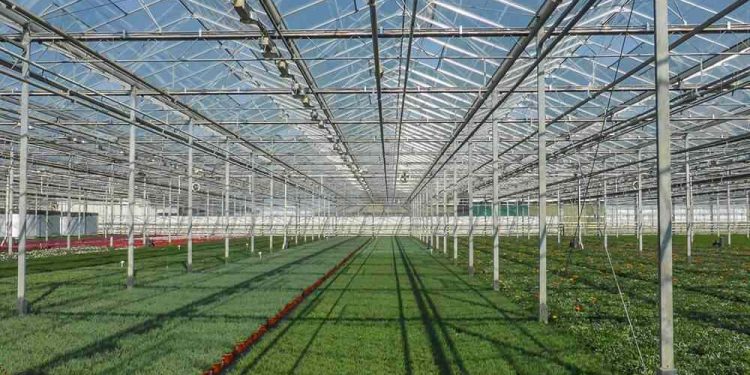CBS, a specialist in biological crop protection, conducted a survey among 1,315 greenhouse companies in the Netherlands. In 2020, 95% of the greenhouse crop area was protected by biological methods such as parasitic wasps or predatory mites. In 2016, this figure was 92%, and in 2012 – 78%.
In 2020, biological pest control was applied to the entire cultivated area of cucumbers, peppers and tomatoes in greenhouses to control pests and spider mites. For these three food crops, the use of biological pest control was high as early as 2012. For example, 96% of tomato areas and almost 90% of cucumber and sweet pepper areas were treated with biological pest control in 2012.
The use of biosecurity on protected strawberries has increased significantly, from 58% in 2016 to 98% in 2020. Ornamental plants such as roses, gerberas and chrysanthemums also have a biological control share of over 90% in 2020. Only potted plants – flowering or deciduous – lag behind: 75% and 81% respectively.
The number of biological control agents in use is growing. There are four main groups of biological control agents used for pest control in the greenhouse industry. About 52 billion predatory mites and parasitic wasps were used in 2020, almost five times more than in 2016. The number of parasitic wasps and gall midges reaches 2.4 billion, more than twice as many as in 2016. The number of predatory bugs, lacewings and predatory beetles is significantly lower at 0.2 billion, but more than double what it was in 2016. The fourth group of biological remedies are nematodes: they are used in large numbers in the greenhouse sector, but only figures for 2020 (5.202 billion) are available.
The use of predatory mites and thrips in all nine crops studied increased slightly, from 66% of cultivated area in 2016 to 69% in 2020. The use of these biological agents has increased, especially in greenhouse cultivation of strawberries (98% of the area vs. 54% in 2016) and gerberas (98% vs. 68%). In tomato cultivation, predatory mites play a less important role, where parasitic wasps are more important as biological control agents.
In 2020, parasitic wasps and gall midges were used on 74% of the total area of nine crops in the greenhouse sector. In 2016, this figure was 67%. These biological control agents are widely used in the cultivation of peppers (98% of the area), tomatoes (95%) and gerberas (94%). The largest increase in use has occurred in rose cultivation, from 52% of the area in 2016 to 82% in 2020.
The use of predatory beetles, lacewings and hoverflies in the greenhouse industry has increased from 54% of cultivated area in 2016 to 61% in 2020. In pepper cultivation, this group of insects is used for pest control on 98% of the area, followed by the cultivation of tomatoes – 93%. The use of these biological pest control agents has increased significantly in greenhouse rose production, from 25% in 2016 to 56% in 2020. Other crops, with the exception of chrysanthemums, also saw growth. When growing cucumbers, this group of biological control agents is used little (8% of the total area), since predatory mites are mainly used.












